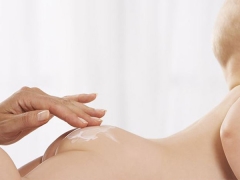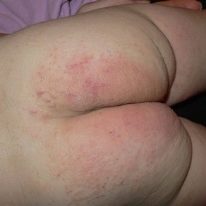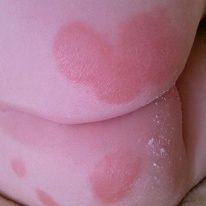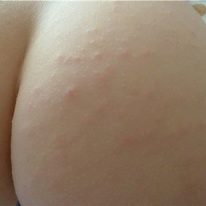How to treat diathesis on the priest in a child?
Many young mothers face diathesis in babies. Very often, rashes appear on the skin of a child’s buttocks. How to make sure that this rash really appeared due to diathesis and how to help the child?
What does it look like?
The skin on the baby's buttocks may become covered with red spots. They are dense red areas of skin with clear boundaries. From above such stains may be covered with scales that appear when peeling. The intensity of such redness may be different.
In addition, a rash of a different nature may appear on the baby's priest. It may be small bubbles, small papules, red dots. When scratching, the baby may carry an infection and pustules join to the redness.
Symptoms
In addition to skin lesions, a child may experience the following diathesis symptoms:
- Digestive disorders (the baby may have diarrhea, frequent regurgitation, vomiting, abdominal pain, impaired appetite, nausea).
- Lesions of the mucous membranes (they can manifest as a runny nose, persistent cough, conjunctivitis).
- Sleep disturbances (due to itch, the baby is restless, naughty, sleeps badly).
Perhaps this is not diathesis?
Rash is not always a sign of an allergic reaction. They may appear in such situations:
- Baby for a long time is in the same diaper or rarely washed away. The result is diaper rash.
- The baby is overheated. Prolonged exposure to high temperatures leads to hemorrhage.
- Crumbs developed diaper dermatitis. When swaddling to the skin is difficult access of air, and urine irritates the skin of the baby.
- In children older than 3 years old, a rash on the bottom can be a symptom of hemorrhagic vasculitis. This is a serious illness that is treated permanently, so in all cases of a rash on the buttocks, the child should be examined by a doctor.
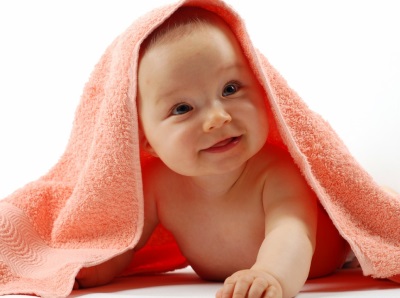
The reasons
Diathesis is the individual inclination of the child to certain diseases, due to the following reasons:
- Heredity. The child receives a genetic propensity for a number of diseases from parents.
- External factors. Propensity to disease can be formed as a result of the influence of various factors during the intrauterine development of the baby, as well as in the first year of the infant's life. Such factors are a strong toxicosis in a pregnant woman, infection during pregnancy, the expectant mother's use of an excess of allergenic products, adverse environmental conditions, transfer of the newborn to feeding with the mixture, too early start of feeding and others.
How to treat?
If the manifestations of diathesis are localized, that is, they are represented only by rashes on the pope, this problem can be solved quite easily. Often, such an allergic reaction is provoked by cosmetics, for example, powder or cream.
The first actions of parents should be a revision of children's cosmetics, diapers and quality of baby clothes. So you eliminate the impact of the allergen on the baby. Also, rash on the pope can appear as a result of irritation of the baby’s skin with urine. Therefore it is necessary to take a referral from a pediatrician for urine analysis.
Much less often rash on a priest appears after the use of allergens in food, but it is also possible. In this situation, the first action of the mother should be strict hypoallergenic diet. If diathesis manifested itself in infants, then the mother should follow the diet.If the crumb has already tried feeding, you should review the list of products that are already included in his menu.
To relieve itching and quickly eliminate redness, babies are often prescribed children's creams and ointments, for example, bepantin or desitin. It is also recommended to bathe the baby in the decoction of herbs, for example, chamomile, turns, oak barkcelandine Their soothing and anti-inflammatory effect will accelerate the elimination of diathesis on the buttocks.
In some cases, the doctor will prescribe medication, including antihistamine drugs, probiotics (if dysbiosis is detected), sedatives, hormonal ointments. In each case, the rash on the buttocks treatment is chosen individually.
Care
- More often arrange baby air baths. Let the crumb stay for a while without a diaper.
- Remove synthetic fabrics from your wardrobe. Clothes for baby choose dim and natural.
- Change bedding often in baby bed.
- Clean the crumbs regularly and use cosmetics only from the hypoallergenic series.
- Bathe your baby daily.
- Wash baby clothes using skin neutral products.
- Wet clean, ridding your home of allergens such as dust and wool.
- Cut the baby’s nails in time so that the baby doesn’t comb the rash on the bottom.
